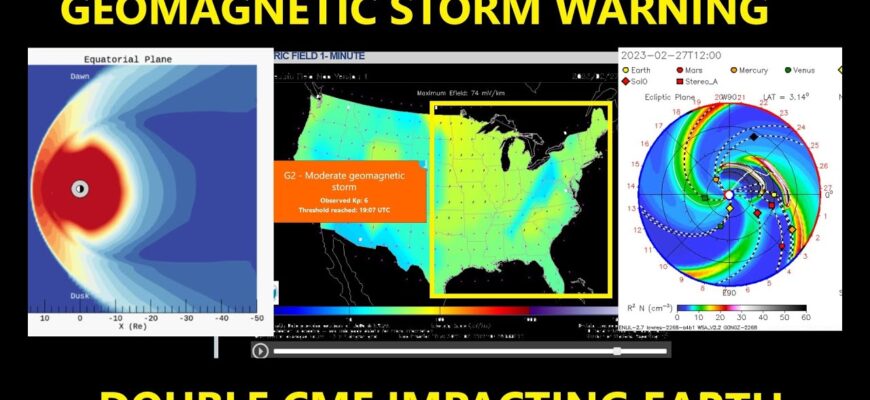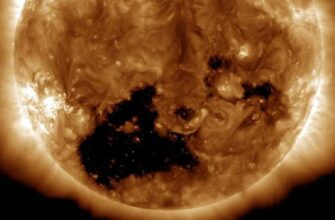As Friday, August 8, 2025, draws to a close, a cosmic event of considerable magnitude is preparing to make its presence felt. Scientists from the Laboratory of Solar Astronomy at the Space Research Institute (IKI) of the Russian Academy of Sciences have issued a forecast: a geomagnetic storm, potentially the most powerful to impact Earth in two months, is set to reach its peak intensity towards midnight Moscow time.
Understanding the Cosmic Dynamics
For the uninitiated, a geomagnetic storm isn`t a meteorological event involving wind and rain, but rather a disturbance of Earth`s magnetosphere caused by a powerful exchange of energy from the solar wind. Our planet, nestled within its protective magnetic bubble, is constantly bathed in a stream of charged particles emanating from the Sun. When this stream intensifies significantly, it can lead to what we term a geomagnetic storm.
The current episode, according to IKI RAS, is primarily attributed to Earth`s recent transit through the “edge” of a coronal hole. These regions on the Sun`s surface appear darker in X-ray images because they are cooler and less dense. More critically, they are areas where the Sun`s magnetic field lines extend far out into space, allowing high-speed solar wind to escape more freely. This particular event is being exacerbated by the arrival of a significant plasma cloud, catapulted from the Sun in an earlier outburst.
The Solar Wind: A Cosmic Breath
Observations reveal a notable increase in both the temperature and velocity of the solar wind as it streams past Earth. This surge of energetic particles puts pressure on our planet`s magnetosphere, potentially compressing it on the Sun-facing side and stretching it into a long “tail” on the night side. Interestingly, while temperature and speed are rising, the plasma density has reportedly decreased. This might sound counter-intuitive, but it aligns with the expected behavior as Earth interacts with the less dense, high-speed streams from coronal holes.
“The arrival of the plasma cloud and the associated peak in geomagnetic activity today, according to the latest calculations, is expected closer to midnight,” the Laboratory statement clarified, pinpointing the zenith of this cosmic dance.
Anticipating the Peak and Its Implications
Initial signs of geomagnetic disturbance were first anticipated between 6:00 PM and 7:00 PM Moscow time. However, the true climax, where the storm`s full force is unleashed, is reserved for the darker hours. Sergey Bogachyov, head of the Laboratory of Solar Astronomy, previously cautioned that the anticipated disturbances could escalate into the most intense magnetic storm experienced in the last 60 days. This indicates a significant event, surpassing the typical, milder fluctuations that often go unnoticed by the general public.
While often sensationalized, the practical impacts of moderate to strong geomagnetic storms are primarily on technology. Satellites can experience drag, power grids can see induced currents, and radio communications, particularly at higher latitudes, can be disrupted. For those sensitive to such phenomena, often referred to as “meteorologically sensitive” individuals, minor health complaints like headaches or fatigue are sometimes reported, though scientific consensus on a direct causal link remains a subject of ongoing research.
A Grand Spectacle, Largely Unseen
As humanity goes about its evening routines, largely oblivious to the invisible celestial ballet unfolding billions of miles away, scientists remain vigilant. The precision of these forecasts, based on sophisticated models and real-time solar observations, is a testament to our ever-growing understanding of the complex relationship between our star and our home planet. It serves as a subtle, yet powerful, reminder that even as we navigate our daily lives, we are all participants in a grand cosmic experiment, occasionally subject to the Sun`s powerful, unyielding will.
So, as the night progresses, perhaps spare a thought for the diligent scientists monitoring this energetic cosmic pulse, ensuring our technological infrastructure remains robust against the Sun`s powerful, if somewhat aloof, influence. It`s a reminder that even in an age of technological marvels, we remain intricately linked to the dynamic forces of our solar system.









